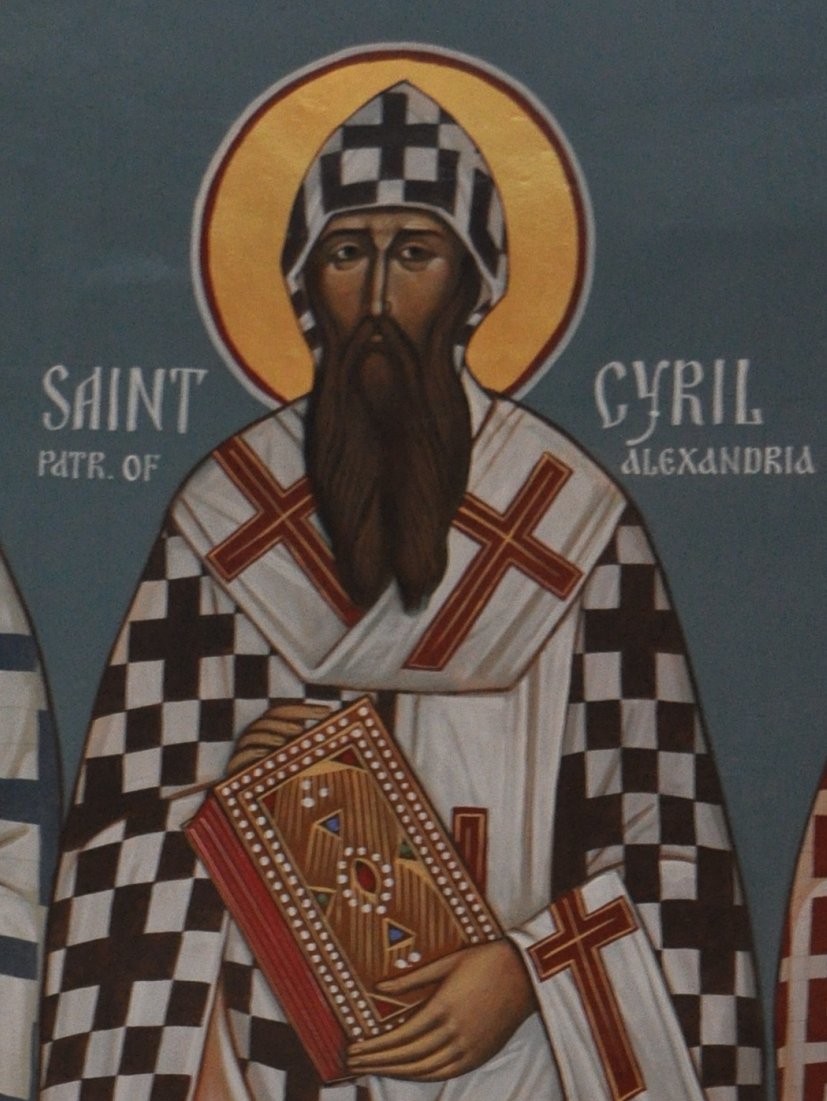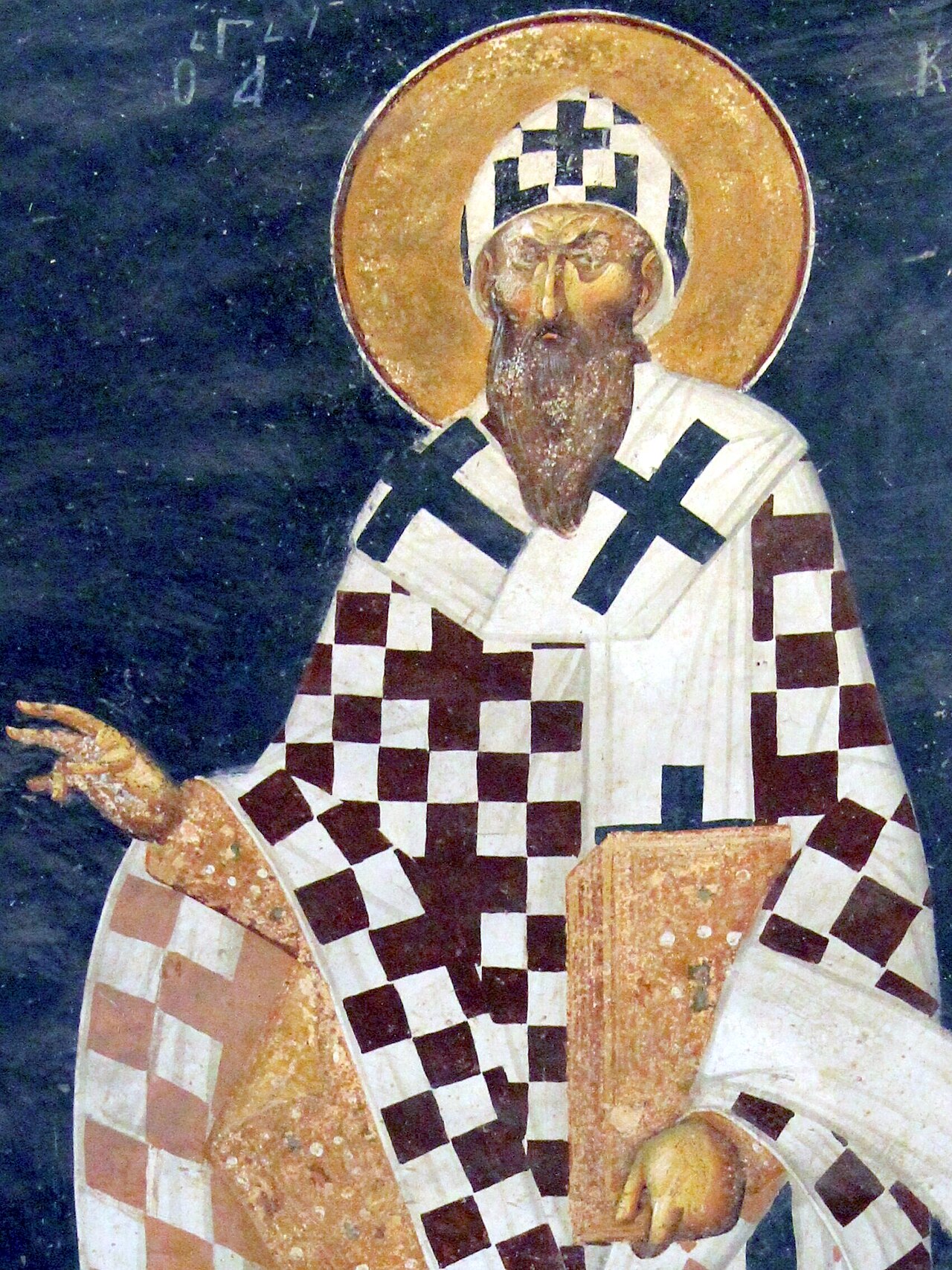
Catholic Saints
Saint Cyril of Alexandria (c. 376–444 AD), a towering fifth-century theologian and Doctor of the Church, emerged from the intellectual crucible of Alexandria, Egypt, to become a fierce defender of Christ’s divinity. As Patriarch of Alexandria from 412 to 444 AD, he confronted heresies with unrelenting zeal, most famously Nestorianism, which challenged the unity of Christ’s divine and human natures. His leadership at the Council of Ephesus in 431 AD cemented the title of Mary as Theotokos (Mother of God), a cornerstone of orthodox Christology. Cyril’s extensive writings—commentaries on Scripture, polemical letters, and theological treatises—blend sharp intellect with pastoral fervor, often clashing with foes like Nestorius in a turbulent era of political and religious strife. Named a Doctor of the Church in 1882 by Pope Leo XIII, Cyril’s legacy endures as a testament to the power of doctrine in safeguarding the faith.
His feast day is celebrated on June 27.
Doctor of the Church
Born around 376 AD in Alexandria, Cyril emerged as a pivotal figure in fifth-century Christianity, wielding theological brilliance and pastoral tenacity to shape the Church’s understanding of Christ’s nature.
Cyril was born in Alexandria, Egypt, around 376 AD, a city renowned as a nexus of intellectual and cultural exchange in the late Roman Empire. Raised in a Christian family, his early life unfolded amid the vibrant legacy of the Alexandrian Church, home to luminaries like Clement and Origen. Educated in theology and rhetoric, he likely studied under Didymus the Blind, a scholar whose exegetical works deepened Cyril’s grasp of Scripture and Greek philosophy.
Before ascending to prominence, Cyril served as a priest and assistant to his uncle, Patriarch Theophilus of Alexandria. This apprenticeship immersed him in ecclesiastical governance and sharpened his skills in debate, as he accompanied Theophilus to events like the Synod of the Oak in 403 AD, which deposed John Chrysostom. These formative years forged a mind attuned to both doctrine and the practical demands of Church leadership.
In 412 AD, Cyril succeeded Theophilus as Patriarch of Alexandria following his uncle’s death, inheriting a powerful see at a time of religious and political turbulence. His early tenure was marked by decisive, often controversial actions: he closed churches of the Novatian sect, expelled Jewish communities after violent riots in 415 AD, and suppressed lingering pagan influences, moves that reflected his uncompromising vision for Christian unity.
Cyril’s authority extended beyond spiritual matters, as Alexandria’s patriarchs wielded significant civic influence. His clashes with Orestes, the Roman prefect, underscored the tension between Church and state, culminating in the infamous murder of the philosopher Hypatia by a Christian mob—an event often linked to Cyril’s era, though his direct involvement remains debated. These early years established him as a forceful shepherd, unafraid to wield power in defense of his flock.
Cyril’s greatest legacy emerged in his confrontation with Nestorius, Patriarch of Constantinople, whose teachings from 428 AD posited a separation between Christ’s divine and human natures. Cyril saw this as a threat to the Incarnation’s unity, arguing that it undermined Christ’s role as both fully God and fully man. His response was swift and multifaceted—letters to Nestorius, treatises like *That Christ is One*, and appeals to Pope Celestine I rallied support against the heresy.
This theological battle reached its climax at the Council of Ephesus in 431 AD, which Cyril convened and dominated. Despite political resistance and Nestorius’s allies calling a rival council, Cyril’s faction prevailed, affirming Mary as *Theotokos* (Mother of God) and deposing Nestorius. His 12 anathemas against Nestorianism, though initially contentious, clarified the orthodox position, cementing his reputation as a doctrinal titan.
Beyond polemics, Cyril was a prolific exegete whose biblical commentaries enriched the Church’s theological heritage. His works on the Gospel of John, Luke, and the Pentateuch reveal a pastor’s heart paired with a scholar’s precision, blending allegorical and literal interpretations in the Alexandrian tradition. These writings, often composed during quieter years of his episcopate, offered believers a deeper encounter with Christ through Scripture.
Cyril’s commentary on John, for instance, defends the divinity of the Word against Arian echoes, while his homilies on Luke address practical faith for his congregation. These texts, preserved and studied for centuries, underscore his dual role as teacher and defender, ensuring his influence extended far beyond the controversies of his time.
Cyril’s leadership bridged the Eastern and Western Churches during a period of growing division. His collaboration with Pope Celestine I at Ephesus and his later reconciliation efforts with moderate Antiochenes, like John of Antioch in 433 AD via the Formula of Reunion, healed rifts sparked by the Nestorian dispute. This diplomatic finesse balanced his earlier militancy, showcasing a statesmanlike maturity.
The Formula of Reunion affirmed Christ’s two natures in one person, a compromise that satisfied both Alexandrian and Antiochene perspectives. Cyril’s willingness to negotiate, while holding firm to core doctrine, strengthened the Church’s unity, making Alexandria a pivotal voice in shaping the Christological consensus later ratified at Chalcedon in 451 AD, after his death.
In his later years, Cyril remained active in Alexandria, overseeing his diocese and refining his theological corpus until his death on June 27, 444 AD. His passing marked the end of a dynamic era, but his influence persisted through his writings and the precedents set at Ephesus. Buried in Alexandria, his tomb became a site of veneration, reflecting his enduring stature among the faithful.
Though he did not live to see the Council of Chalcedon, Cyril’s groundwork—particularly his emphasis on Christ’s unity—shaped its outcomes. His death at age 68 closed a chapter of fierce debates, leaving the Church stronger for his efforts, even as his legacy faced scrutiny for its occasional ruthlessness.
Cyril’s contributions earned him the title Doctor of the Church in 1882 from Pope Leo XIII, recognizing his role in defining the Incarnation. His feast day, celebrated on June 27, honors a life that blended scholarship, courage, and pastoral care. His works—translated and circulated widely—continued to inspire medieval theologians and remain studied today.
Through his relentless defense of Christ’s divinity, Saint Cyril of Alexandria shaped the Church’s theological bedrock. His life, though shadowed by controversy—like the Hypatia incident—calls believers to uphold truth with boldness. He reminds us that doctrine, rooted in love for Christ, can withstand the storms of history.
“Surely it is not in vain that Scripture calls her [Mary] the Mother of God; rather, it is because at that moment the two natures had their beginning in Him, Godhead and manhood in one Christ.”
Born in Alexandria.
Educated in theology and rhetoric.
Served under Patriarch Theophilus.
Assisted in church governance.
Became Patriarch of Alexandria.
Led with authority and reform.
Defended *Theotokos* title.
Triumphed over Nestorianism.
Died in Alexandria.
Named Doctor of the Church in 1882.

“Surely it is not in vain that Scripture calls her [Mary] the Mother of God; rather, it is because at that moment the two natures had their beginning in Him, Godhead and manhood in one Christ.”
Saint Cyril of Alexandria Quotes
“Christ has dominion over all creatures, a dominion not seized by violence nor usurped, but His by essence and by nature.”
“The nature of the Word became flesh, and the flesh became the nature of the Word, yet each remained what it was.”
“If He were not God by nature, He could not bestow divinity upon us.”
“The Holy Virgin is the Mother of God, for she bore according to the flesh the Word of God made flesh.”
“We must not think that Christ is divided; He is one Person, one Lord, one Son.”
“Scripture is a lamp to our feet and a light to our path; it guides us to the truth.”